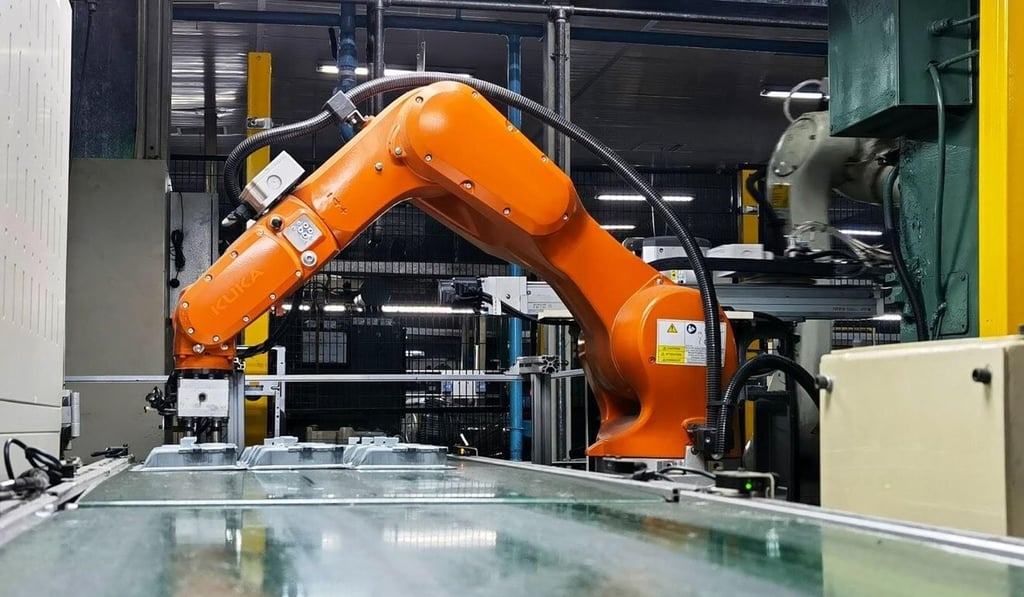As China’s working population falls, factories turn to machines to pick up the slack
- China’s factories are turning to automation to upgrade production lines, and at the same time prepare for fewer, higher-skilled workers
- Chinese manufacturing companies like Midea have already embraced automation to sharply reduce the number of humans needed

This is the 12th in a series of stories about China’s once-a-decade census, which was conducted in 2020. The world’s most populous nation released its national demographic data in May and the figures will have far-reaching social policy and economic implications.
Orange robot arms weld and assemble with extreme precision. Digital cameras, powered by the latest computer vision technology, monitor parts as they move through the assembly line. Autonomous robots transport materials in, and finished products out, of the building silently and without human supervision.
Human beings have been physically removed from this assembly line, replaced by robots and digital-savvy technicians and engineers operating at a distance, who can monitor events in real-time via a digital panel accessible from anywhere in the factory via a portable device.
This is what a modern microwave-making factory run by Midea, one of the world’s largest home appliance makers, looks like in the southern city of Foshan, China, today.
What used to require 16 people now only needs four, said Xu Nian’en, a director at this Midea plant. The company has, over the last six years, invested 4 billion yuan (US$622 million) to transform itself, raising efficiency by 62 per cent and reducing its workforce by 50,000.

